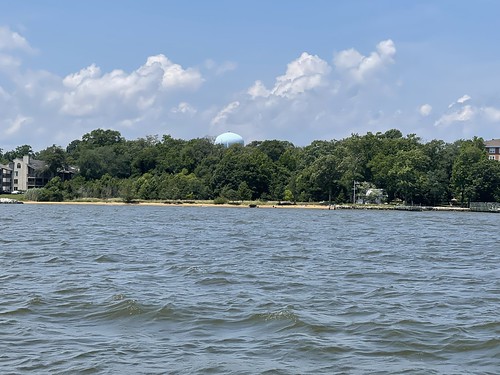State and Local Partnership Will Preserve Open Space on Significant Historic Property
on Chesapeake Bay
on Chesapeake Bay

Photo by Jody Couser, Chesapeake Conservancy
Governor Larry Hogan and the Maryland Department of Natural Resources (DNR) today announced that the State of Maryland will provide more than $4.8 million toward the purchase of a historically significant waterfront property for the development of a new Annapolis public park.
The land has been identified as part of the property once owned by the Carr Family and is close to Carr’s Beach and Sparrow’s Beach, popular resorts on the Chesapeake Bay that served the Black community at a time when they were prohibited from using other beaches. Known as “the Beach,” Carr’s Beach hosted many prominent Black performing artists during the 1940s, 50s, and 60s, including Chuck Berry, The Temptations, Ike and Tina Turner, The Shirelles, Little Richard, and Billie Holiday.
“We are proud to partner with the City of Annapolis to reclaim part of this beautiful waterfront area that is of such great historic and cultural significance,” said Governor Hogan. “As a major music venue and beloved gathering place for generations of Black Marylanders, Carr’s Beach left an incredible legacy that we will now be able to preserve for posterity.”
The state contribution will fund the majority of the land acquisition. DNR is committing $3.68 million in grant funding from Program Open Space (POS) Stateside, which will supplement POS Local funds from the City of Annapolis and Anne Anne Arundel County. Governor Hogan also committed $1.2 million in Local Parks and Playgrounds Infrastructure funding to the Blacks of the Chesapeake Foundation for the Carr property acquisition.
“Carr’s Beach was once a location where my mother enjoyed concerts in the late 1940s, and I’m proud that this partnership will help bring new life to an area that greatly contributed to the rich cultural fabric of Annapolis and the State of Maryland,” said Lt. Governor Boyd K. Rutherford. “The development of a park will add additional outdoor space for future generations to enjoy new adventures and make lasting memories.”
In addition, U.S. Sen. Ben Cardin recently secured $2 million in congressionally directed spending to support the project. The advocacy of Maryland Sen. Sarah Elfreth and the Chesapeake Conservancy has also been critical in these efforts.
“This acquisition presents a unique opportunity to preserve a historically significant area while providing public access and increasing outdoor recreation opportunities on the Chesapeake Bay,” said Secretary Jeannie Haddaway-Riccio of DNR. “We appreciate the governor’s leadership on this project, which has been made possible through a strong desire to further the historic preservation and land conservation goals of Maryland and the City of Annapolis.”
The 5.17-acre property would provide opportunities for walking paths and public water access where public water access is currently limited, protect an unimproved parcel from development, as well as preserve a historical site where Black Marylanders gathered in the 1930s through the 1960s for concerts by world-renowned artists, cultural events, and family outings.
“This is a great day for the City of Annapolis,” said Annapolis Mayor Gavin Buckley. “The significance of Carr’s Beach to the history of Annapolis can never be overstated. For over three decades, the beach was the place to play. From Sarah Vaughan to James Brown to Stevie Wonder, all the greats came to play on the water and look out at the Chesapeake Bay. We now have an opportunity to preserve this site and get it the national recognition it deserves. This would not have been possible without the governor and lieutenant governor, the state, the Blacks of the Chesapeake Foundation, and the Chesapeake Conservancy.”
The City of Annapolis has submitted a POS Local application and has enlisted The Conservation Fund (TCF) Maryland to purchase the property on the city’s behalf. Subject to Board of Public Works approval, DNR is able to dedicate POS Stateside funds to the local project to enable the acquisition to proceed. The program will hold an easement on the property that would conserve ecological attributes and limit the property to passive recreational use, which includes trails, picnic areas and pavilions, and additional amenities.
